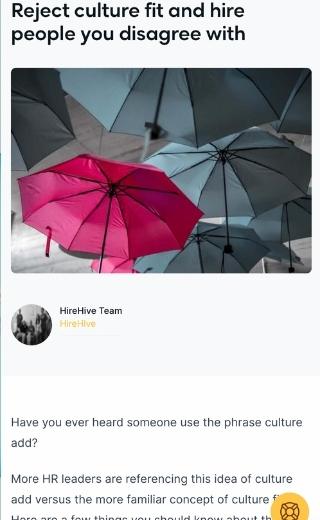There’s no denying it: Thought leadership is a bit of a buzzword.
But under the jargon, thought leadership content — like blog posts, contributed articles, and ebooks — can produce real results for your organization by attracting your target reader, building trust with your audience, and inspiring prospects to connect with you.
Here’s what the data shows:
- Companies with blogs produce an average of 67% more leads monthly than companies without.
- Businesses that blog get 55% more website visitors than businesses that don’t.
- 59% of B2B marketers consider blogs the most valuable channel.
And the best proof: You’re reading this article; This is thought leadership content in action.
What does thought leadership mean?
Nearly thirty years ago, editor-in-chief of Strategy & Business magazine, Joel Kurtzman, said, “A thought leader is recognized. . .as someone who deeply understands the business they are in, the needs of their customers, and the broader marketplace in which they operate. They have distinctively original ideas, unique points of view, and new insights.”
Thought leadership isn’t a specific deliverable; It’s a strategic approach to content. Thought leadership is about how you want to be seen. The type of content you create and publish is up to you.
What is thought leadership content?
In general, when you publish thought leadership content, the goal is to position your firm — or an individual leader within your organization — as a trusted, go-to source. By sharing relevant insights and innovative ideas that address real problems in your space, you can establish yourself as an authority.
If calling yourself a thought leader makes you cringe, you don’t need to. When you consistently share your ideas, you’ll naturally position yourself as a reliable source. (No cringing required.)
3 features of thought leadership content
What is thought leadership content? The overarching umbrella of thought leadership content includes deliverables like blog posts, contributed articles, ebooks, and keynote speeches, to name a few. From a logistical standpoint, thought leadership content generally includes three things: an anecdote, empirical data, and your opinion. Let’s look at each of these components more thoroughly.
1. An anecdote or real-life example
Thought leadership content differs from purely informative content by incorporating something unique to you or your organization — a story only you can tell. If you are working with a content writer or ghostwriter, they should speak with you (or another leader in your organization) to elicit a story that’s unique to you.
The anecdote can be as simple as something you read earlier that week and how it got you thinking. Or it can be a more complex narrative like a story from your childhood or a conversation from a team meeting.
For lengthier thought leadership content like ebooks, the anecdote can be more extensive, like a case study or a narrative that weaves throughout the entire piece. Whatever the case, you want to incorporate an anecdote that your readers can’t find anywhere else.
2. Quantitative or qualitative data
Real-life examples are great, but your ideas should also be backed by data when possible — primary and secondary research are both appropriate. Qualitative data includes things like customer or client quotes. Quantitative data includes survey results and other data published by reputable firms like Gallup, PwC, and McKinsey & Co., or your own primary research.
Whether it’s quantitative or qualitative, primary or secondary, reputable data adds an extra level of credibility to thought leadership content. For example, at the beginning of this article, I cited statistics from HubSpot, a leading authority in the content marketing space. While it would be time-intensive for me to gather primary data on the ROI of business blogs, HubSpot has it covered; There’s no reason for me to reinvent the wheel.
3. Your opinion
Lastly, thought leadership content should include the author’s opinion. It doesn’t need to be an outrageous thought or an outlandish idea; It needs to be a clear opinion.
For example, shortly after Uber’s IPO, I worked with a client — a co-founder of a coaching platform — to capture her ideas about Uber and the cost of toxic leadership. We included phrases like, “I strongly believe…” and “I don’t think…” She didn’t shy away from addressing Uber’s scandals, how toxic culture can impact the bottom line, and how toxic leadership ties to coaching and positive company culture.
If you want to publish thought leadership content, you can’t shy away from sharing your opinion.
Positioning your organization with thought leadership content
I recognize that thought leadership is buzzwordy, but beyond the jargon, strategic thought leadership content has real value. When you publish thought leadership content built around unique anecdotes, credible data, and a clear opinion, you can position yourself as a trusted source.
Statistically, you can also increase your leads and improve your website traffic, while establishing yourself — or your organization — as an expert in your industry. You have original ideas and thoughtful stories that only you can tell. It’s time to share them with a broader audience.
Want to learn more about how laura riley + co. can help your organization, let’s connect! laura riley + co. produces thought leadership articles, guides, and ebooks for workplace tech and coaching clients.







